Haolan Zhang
IRAF-SLAM: An Illumination-Robust and Adaptive Feature-Culling Front-End for Visual SLAM in Challenging Environments
Jul 10, 2025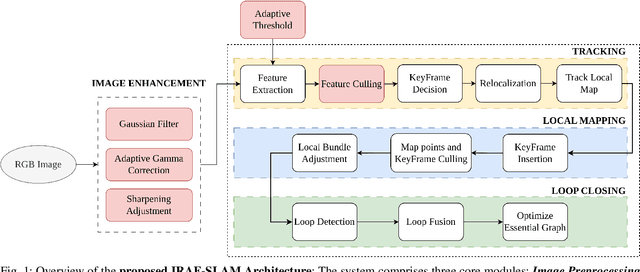

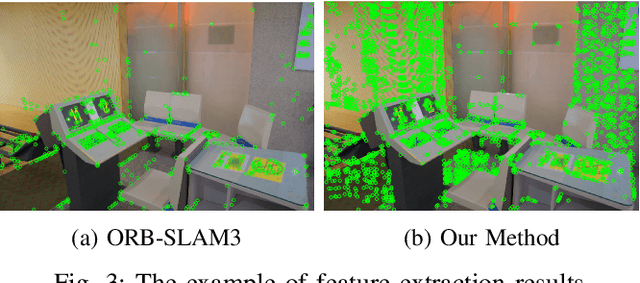
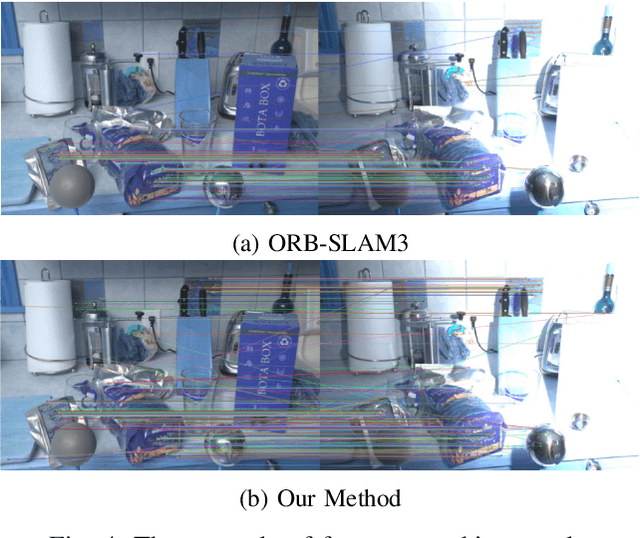
Abstract:Robust Visual SLAM (vSLAM) is essential for autonomous systems operating in real-world environments, where challenges such as dynamic objects, low texture, and critically, varying illumination conditions often degrade performance. Existing feature-based SLAM systems rely on fixed front-end parameters, making them vulnerable to sudden lighting changes and unstable feature tracking. To address these challenges, we propose ``IRAF-SLAM'', an Illumination-Robust and Adaptive Feature-Culling front-end designed to enhance vSLAM resilience in complex and challenging environments. Our approach introduces: (1) an image enhancement scheme to preprocess and adjust image quality under varying lighting conditions; (2) an adaptive feature extraction mechanism that dynamically adjusts detection sensitivity based on image entropy, pixel intensity, and gradient analysis; and (3) a feature culling strategy that filters out unreliable feature points using density distribution analysis and a lighting impact factor. Comprehensive evaluations on the TUM-VI and European Robotics Challenge (EuRoC) datasets demonstrate that IRAF-SLAM significantly reduces tracking failures and achieves superior trajectory accuracy compared to state-of-the-art vSLAM methods under adverse illumination conditions. These results highlight the effectiveness of adaptive front-end strategies in improving vSLAM robustness without incurring significant computational overhead. The implementation of IRAF-SLAM is publicly available at https://thanhnguyencanh. github.io/IRAF-SLAM/.
Benchmarking Domain Generalization on EEG-based Emotion Recognition
Apr 18, 2022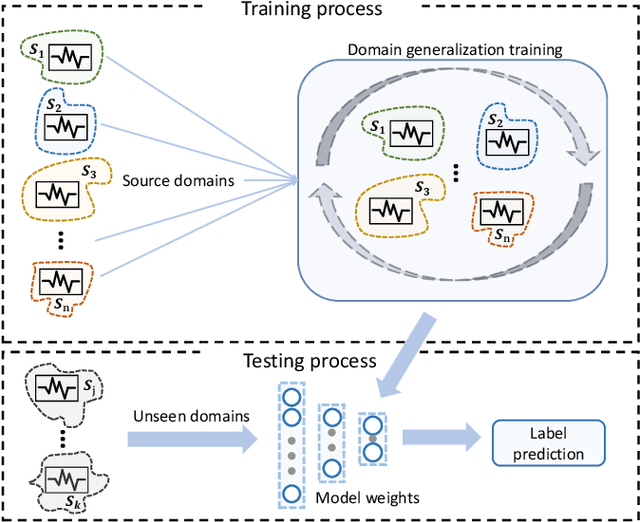

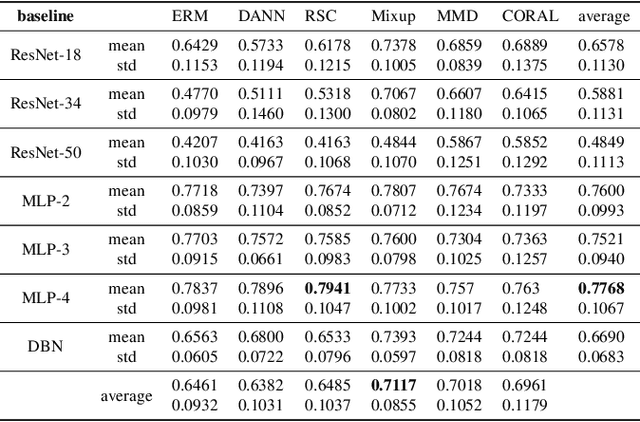
Abstract:Electroencephalography (EEG) based emotion recognition has demonstrated tremendous improvement in recent years. Specifically, numerous domain adaptation (DA) algorithms have been exploited in the past five years to enhance the generalization of emotion recognition models across subjects. The DA methods assume that calibration data (although unlabeled) exists in the target domain (new user). However, this assumption conflicts with the application scenario that the model should be deployed without the time-consuming calibration experiments. We argue that domain generalization (DG) is more reasonable than DA in these applications. DG learns how to generalize to unseen target domains by leveraging knowledge from multiple source domains, which provides a new possibility to train general models. In this paper, we for the first time benchmark state-of-the-art DG algorithms on EEG-based emotion recognition. Since convolutional neural network (CNN), deep brief network (DBN) and multilayer perceptron (MLP) have been proved to be effective emotion recognition models, we use these three models as solid baselines. Experimental results show that DG achieves an accuracy of up to 79.41\% on the SEED dataset for recognizing three emotions, indicting the potential of DG in zero-training emotion recognition when multiple sources are available.
MutualGraphNet: A novel model for motor imagery classification
Sep 02, 2021
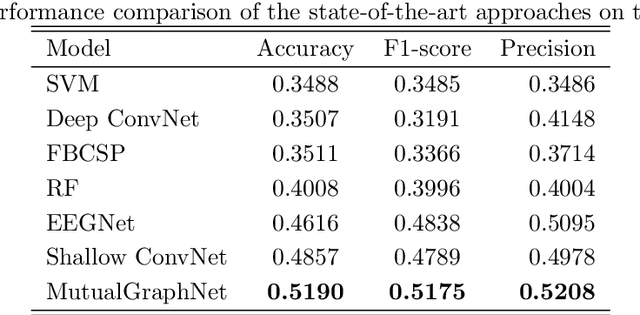
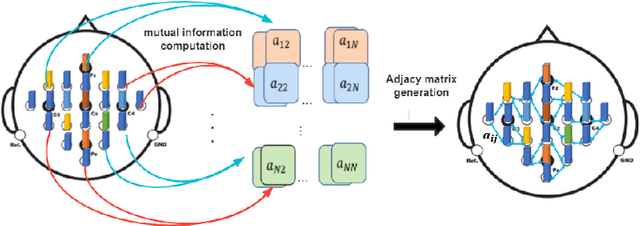
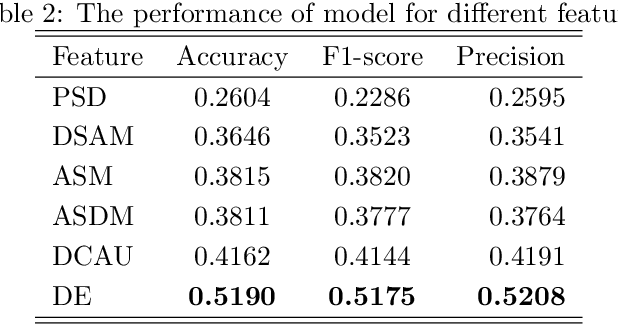
Abstract:Motor imagery classification is of great significance to humans with mobility impairments, and how to extract and utilize the effective features from motor imagery electroencephalogram(EEG) channels has always been the focus of attention. There are many different methods for the motor imagery classification, but the limited understanding on human brain requires more effective methods for extracting the features of EEG data. Graph neural networks(GNNs) have demonstrated its effectiveness in classifying graph structures; and the use of GNN provides new possibilities for brain structure connection feature extraction. In this paper we propose a novel graph neural network based on the mutual information of the raw EEG channels called MutualGraphNet. We use the mutual information as the adjacency matrix combined with the spatial temporal graph convolution network(ST-GCN) could extract the transition rules of the motor imagery electroencephalogram(EEG) channels data more effectively. Experiments are conducted on motor imagery EEG data set and we compare our model with the current state-of-the-art approaches and the results suggest that MutualGraphNet is robust enough to learn the interpretable features and outperforms the current state-of-the-art methods.
 Add to Chrome
Add to Chrome Add to Firefox
Add to Firefox Add to Edge
Add to Edge